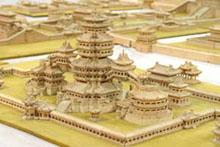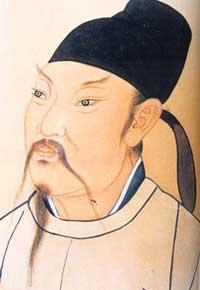The Tang Dynasty with its capital at Chang'an (present-day Xi'an) is regarded as the height of the Chinese imperial era.Tang Dynasty emperors adopted liberal policies that enabled China's feudal society to prosper. Agriculture, handicrafts and commerce flourished,  technologies for textilemanufacturing and dyeing, porcelain making, smelting andprinting developed remarkably, and land and water transportation greatly improved. Stimulated bytheculturesof India and Arabia, the Tang became a flowering multi-culture. By the 7th century, the Tang had gained dominance over the Tarim basin, and extended its influence to many city-states in Central Asia. During this period, the Tang also succeeded in establishing strong economic and cultural ties with many countries, including Japan, Korea, India, Persia and Arabia. 2
technologies for textilemanufacturing and dyeing, porcelain making, smelting andprinting developed remarkably, and land and water transportation greatly improved. Stimulated bytheculturesof India and Arabia, the Tang became a flowering multi-culture. By the 7th century, the Tang had gained dominance over the Tarim basin, and extended its influence to many city-states in Central Asia. During this period, the Tang also succeeded in establishing strong economic and cultural ties with many countries, including Japan, Korea, India, Persia and Arabia. 2
The first Tang emperor initiated a system for ruling the state by dividing the country into 300 prefectures which were administered by appointed officials under his direct control. Like the Sui Dynasty the government system was supported by intellectuals selected through civil service examinations. This system worked very well and drew the best talent into government. The new political system avoided potential threats from aristocratic families and warlords that enabled the empire to be stable for a remarkably long time.
A system of equal land allotments to the male population increased agriculture production that was the backbone of a prosperous farming civilization. Taxes on the allotments were the Tang's greatest source of income, and increased the government's wealth and strength. The Tang Dynasty's powerful army was composed of volunteer farmer-soldiers, and helped the Tang extend its control beyond traditional China proper through several successful expeditions.
The Tang Dynasty was a vibrant, colorful culture. Many merchants, envoys, missionaries, and students from Central Asian states and neighboring countries, such as Japan and Korea, traveled to Chang'an along the Silk Road. Because of the presence of many foreigners, new religions were practiced in the empire, including Nestorian Christianity, Zoroastrianism, Judaism and Islam. Foreign clothing, exotic food and foreign sports, like polo, became popular among wealthy people and nobles. Musical instruments and melodies from India and Arabia enriched traditional Chinese music.
 The Tang Dynasty witnessed a flourishing of literature, and was the golden age of Chinese poetry. The most famous poets of this age were Wang Wei, Li Bai, Du Fu, and Bai Juyi. The poems composed by them are regarded as a precious literature legacy.
The Tang Dynasty witnessed a flourishing of literature, and was the golden age of Chinese poetry. The most famous poets of this age were Wang Wei, Li Bai, Du Fu, and Bai Juyi. The poems composed by them are regarded as a precious literature legacy.
Buddhism reached its peak during the early Tang Dynasty. Later on, Buddhism declined while Confucianism became dominant. Many Confucian scholar-officials regarded Buddhism's growing influence on the common people as a threat to the stability of the country. A strong attempt was made to eliminate it. Near the end of the Tang Dynasty, a full-scale persecution of Buddhism was begun. Many temples were demolished and Buddhists were forced to give up their faith or be killed.
In the middle of the 8th century, the rebellion of An Lushan, a general with nomadic ancestors, devastated the kingdom. It took years for peace to be restored. However, the rebellion marked the decline of the Tang Dynasty. In later years, tyranny, economic exploitation and popular rebellions further weakened the Tang government. Disunion always seemed to follow a long period of unity in China, and in 907 AD, northern invaders ended the glorious Tang Dynasty. China was fragmented into five, short-lived, northern dynasties and ten southern states for the next 50 years.
